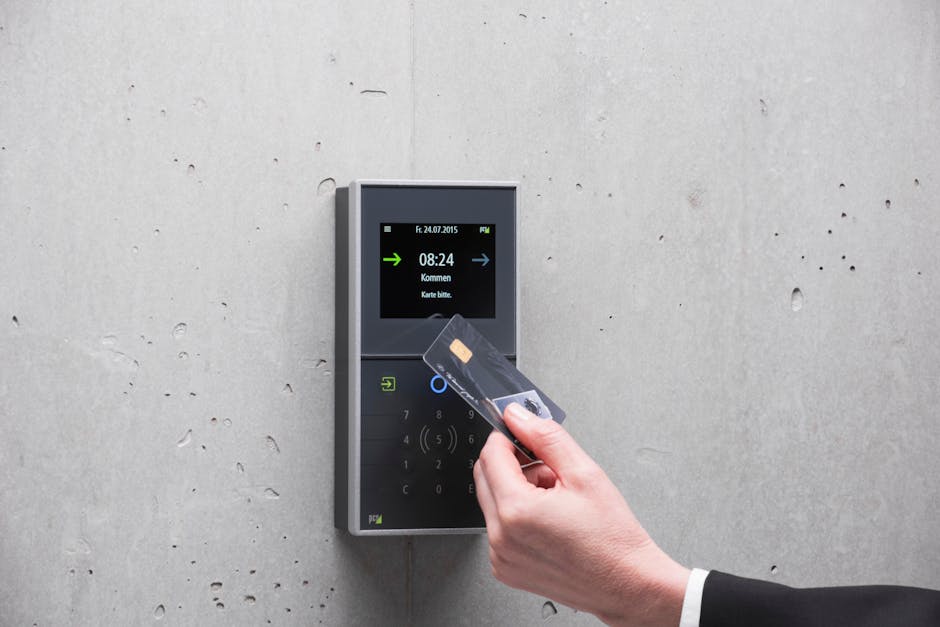Secure Sign-In Tools for Businesses: Enhance Corporate Security
Imagine you're running a business, and your team is bustling with activity, handling sensitive client data, managing finances, and brainstorming proprietary strategies. Now, picture a breach in this secure environment because someone cracked a weak password or exploited an outdated sign-in system. It’s a chilling thought, isn't it? This is why businesses are turning to advanced secure sign-in tools to protect their operations from unauthorized access and cyber threats.

Why Traditional Passwords Aren't Cutting It
Passwords have been the go-to method for authentication for decades. But here's the harsh reality: they’re not enough anymore. Think about it, how many times have you reused a password across multiple platforms? Or worse, written it down on a sticky note? Hackers thrive on these vulnerabilities, using sophisticated techniques like phishing or brute force attacks to gain access.
According to Verizon’s 2023 Data Breach Investigations Report (Verizon), over 80% of hacking-related breaches involved stolen or weak credentials. This statistic alone underscores the importance of adopting more robust methods of authentication.
Multi-Factor Authentication (MFA): A Layered Defense
If passwords are the first line of defense, think of multi-factor authentication as the fortress walls. MFA requires users to verify their identity through at least two separate factors: something they know (password), something they have (smartphone or token), or something they are (biometric data like fingerprints).
Take Google Workspace as an example. They offer users the option to enable MFA via apps like Google Authenticator, which generates time-sensitive codes. Even if someone manages to steal your password, they’ll still need access to your physical device. According to Microsoft, enabling MFA can block over 99% of automated attacks (Microsoft Security Blog). That’s a staggering improvement in security for such a simple addition.
Single Sign-On (SSO): Simplifying Access Without Sacrificing Security
Picture this: you’re an employee juggling eight different applications daily, each requiring its own username and password. Sound familiar? Single Sign-On technology eliminates this hassle by allowing users to log in once and gain access to multiple systems seamlessly.
Okta (a leader in identity management) integrates SSO with various applications while maintaining strict security protocols (Okta). This not only enhances productivity but also reduces the likelihood of password fatigue leading to risky behaviors like reusing passwords.
The Role of Biometrics in Business Security
Biometric authentication might sound like something out of a sci-fi movie, but it’s very much a reality today. Fingerprint scanners, facial recognition software, and even retina scans are becoming mainstream in business environments.
Apple’s Touch ID and Face ID are prime examples of how biometrics are reshaping security. These tools use unique biological markers that are nearly impossible to replicate. While implementing such systems might seem costly initially, consider the long-term benefits: reduced risk of breaches and enhanced user convenience.
A report from MarketsandMarkets forecasts that the global biometrics market will reach $82 billion by 2027 (MarketsandMarkets). Businesses are clearly recognizing the value of these technologies as part of their security arsenal.
Zero Trust Architecture: Trust No One, Verify Everything
The concept of Zero Trust flips traditional security models on their head. Rather than assuming users inside your network can be trusted, Zero Trust requires continuous verification for every user and device attempting to access resources.
Companies like Cisco have adopted Zero Trust frameworks to mitigate risks associated with remote work (Cisco). This approach ensures that even if one layer is breached (say through compromised credentials) additional layers will prevent further damage.
Getting Started: What Should Businesses Look For?
If you’re considering upgrading your sign-in tools, here’s a checklist to guide you:
- User-Friendly Design: Employees are more likely to embrace tools that are intuitive and easy to use.
- Integration Capabilities: Ensure the tool can work seamlessly with your existing systems and software.
- Compliance: Check if the solution aligns with industry regulations like GDPR or HIPAA.
- Scalability: Your business may grow; make sure the tool can adapt accordingly.
- Support and Training: Choose providers that offer robust customer support and user training sessions.
Avoiding Common Pitfalls
No system is foolproof if implemented incorrectly. Rolling out MFA without educating employees about its importance might lead to resistance or even misuse. Similarly, relying solely on biometrics without additional layers can create vulnerabilities if the biometric data itself is compromised.
A balanced approach often works best. Combine multiple tools and educate your team on why these measures matter, not just for the company but for their personal data security too.
The Final Word on Secure Sign-In Tools
Investing in secure sign-in tools isn’t just about ticking off a box on your IT checklist; it’s about safeguarding what matters most, your business and its people. Whether it’s adopting MFA, implementing SSO solutions, or exploring biometrics, there’s no one-size-fits-all approach.
The stakes are high in cybersecurity battles today. With robust sign-in tools in place, you’re not just responding to threats, you’re staying ahead of them.
